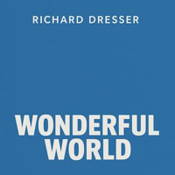
Overview
Synopsis
In Wonderful World, brothers Max and Barry host what is meant to be a harmless dinner gathering that triggers monumental disruptions in their close-knit New England family. A mix-up in a dinner invitation (Barry receives an invitation that omits his wife’s name) leads Patty to believe she was excluded intentionally. When she shows up, she launches a full “scorched-earth” campaign of truth-telling. As tensions mount, hidden resentments erupt, and alliances shift among Max, Barry, Patty, Max’s girlfriend Jennifer, and their mother Lydia as they struggle with long-buried secrets, illness, and romantic betrayal.
The play examines how small misunderstandings can loosen the grip of familial loyalty. Max’s fears and unspoken desires surface; Barry’s marriage is tested under pressure; Jennifer and Lydia are pulled into the conflict. Through biting humor and raw emotion, Wonderful World reveals how family bonds can be both fragile and tenacious, pushing characters toward pain, revelation, and ultimately a reconfiguration of relationships.
Show Information
Context
Richard Dresser wrote Wonderful World in the early 2000s, a period when American theatre was leaning into intimate, family-centered dark comedies that dissected modern relationships. Dresser, already known for Below the Belt and Rounding Third, continued his exploration of everyday characters grappling with the absurdities and disappointments of contemporary life. The play debuted in regional theatre before moving into broader circulation, cementing Dresser’s reputation for combining sharp
to read the context for Wonderful World and to unlock other amazing theatre resources!Plot
Characters
| Name | Part Size | Gender | Vocal Part |
|---|---|---|---|
|
Lead |
Male |
Non-singer |
|
|
Lead |
Male |
Non-singer |
|
|
Supporting |
Female |
Non-singer |
|
|
Supporting |
Female |
Non-singer |
|
|
Supporting |
Female |
Non-singer |
Songs
A song with an asterisk (*) before the title indicates a dance number; a character listed in a song with an asterisk (*) by the character's name indicates that the character exclusively serves as a dancer in this song, which is sung by other characters.
Monologues
Scenes
Key Terms
Catharsis is the emotional release experienced by the audience at the conclusion of a tragedy or intense dramatic work. It allows viewers to purge feelings of fear, pity, or tension through the resolution of the play’s conflict. The concept dates back to Aristotle, who believed catharsis was central to the purpose of theatre.
The moment of highest tension in a play, usually where the main conflict reaches a turning point.
A genre that combines elements of humor and morbidity, exploring serious themes through satire or irony.
Occurs when the audience knows more than the characters on stage, creating tension, humor, or poignancy.
Exposition is the presentation of background information necessary to understand the story, such as setting, character relationships, and prior events. It is often delivered through dialogue, narration, or stage action woven naturally into the play. Effective exposition provides clarity without disrupting the flow of the drama.
The imaginary wall separating the audience from the actors onstage, often 'broken' for direct address. This term plays a vital role in understanding theatrical structure and is commonly encountered in stagecraft or performance settings.
A theatrical movement that strives to depict everyday life and authentic behavior on stage. It often focuses on domestic settings and psychological depth.
A unit set is a single stage setting that is used throughout a play, rather than changing locations with each scene. It provides a continuous environment that can be adapted with lighting, props, or minimal adjustments to suggest different times or moods. Unit sets are often chosen for their practicality and ability to focus attention on the actors and dialogue.
Videos
Sorry! We do not currently have videos for this guide.
Quizzes
Sorry! We do not currently have quizzes for this guide.
Themes, Symbols & Motifs
Themes
Family Dysfunction – The play dissects how
to read about the themes, symbols and motifs from Wonderful World and to unlock other amazing theatre resources!Quote Analysis
Sorry! We do not currently have learning modules for this guide.
